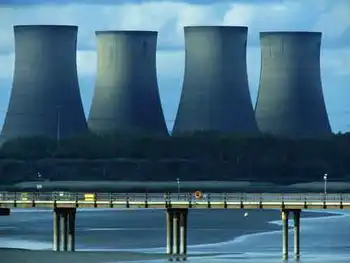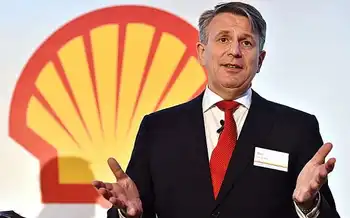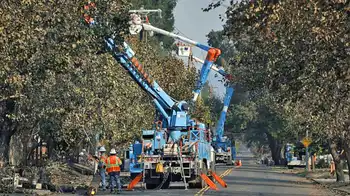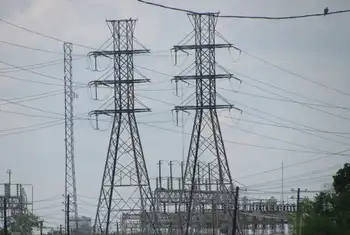Huge nuclear plant in the works
TORONTO, ONTARIO - The first nuclear power plant to be built in Ontario in more than 20 years could be more than three times larger than what the Liberal government said was needed when it first outlined its nuclear plan in 2006.
Environmentalists are calling it a classic "bait-and-switch" aimed at avoiding a public backlash when the plan was first announced.
According to a request for proposals to build the new plant, the province is now looking to construct "a stand-alone, two-unit nuclear power plant... to provide roughly 2,000-3,500 (megawatts) of baseload generation capacity."
The call for bids was issued last week to federally owned Atomic Energy of Canada Ltd. and three foreign nuclear-reactor companies that made a short list.
A 3,500-megawatt plant would be one of the largest nuclear projects in the world, roughly equal to the size of the existing generating station at Darlington, and would be big enough to power all homes and businesses in Toronto. It would be located either at Darlington or the Bruce generating station near Kincardine. The document also asks that proposals give the government the "option" to build one or two additional reactors.
Energy Minister Gerry Phillips told the Star that the original target was to build 1,400 megawatts, envisioned at the time as two 700-megawatt Candu reactors.
"It's always been that we're going to build a plant with two reactors," Phillips said. "The average size of the plants has gone up. At the time (reactors) were 700 megawatts.... Now reactors are more 1,000 megawatts to 1,600 megawatts."
Estimates for new nuclear plants are anywhere between $8 billion and $15 billion. But rising costs for labour and materials make the figure a moving target. Electricity customers will foot the bill, but Queen's Park is adamant that the bulk of any cost overruns is expected to be shouldered by the winning bidder.
Phillips said it's more economical to build reactors in pairs. "People expect us to plan for contingencies, so I don't really apologize for what's in the request for proposal," Phillips added. "It's just good planning to ask for those numbers."
But former energy minister Dwight Duncan, in an Aug. 26, 2006, interview with the Star, made the government's original intention clear. "The best advice we've had is right now we need 1,000 megawatts of new nuclear built, and we'll go from there."
Duncan said then that the numbers could go up if existing plants were deemed uneconomical to refurbish, but that overall nuclear capacity would not exceed 14,000 megawatts. Most reactors under consideration at that time, both foreign and domestic, ranged in size from 1,000 megawatts to 1,600 megawatts each.
Keith Stewart, an environmentalist with WWF-Canada, said past talk of refurbishing existing plants has been masking the government's real intentions around nuclear.
"Politically, refurbishments are a much easier sell," said Stewart. "So you say it's only going to be a little bit and then ‘Oops!’ – it's much more. We're going to see this more down the road when the costs start coming in."
He added that a process that asks for at least 2,000 megawatts of new nuclear capacity is an admission that the reactors at Pickering B won't be refurbished, even though a decision from Ontario Power Generation isn't expected until next year.
The request to build more nuclear capacity may be controversial for electricity consumers, but it means more business for the winning bidder, which will emerge from a short list of four reactor companies that include AECL, France's Areva NP, and U.S. nuclear-power giants GE-Hitachi Nuclear Energy and Westinghouse Electric.
The decision to open the process to the international community represents a ground-shift in a province that in the past has fulfilled its duty to shop locally, even if it meant being a guinea pig for projects such as Darlington, that were late and dramatically over budget.
A winner is expected by the end of this year, with the goal of getting shovels in the ground in 2012 and electricity on transmission lines by 2018.
The government is also expected to decide by year's end whether Ontario Power Generation or Bruce Power will be the operator of the new plant.
Related News

Germany turns its back on nuclear for good despite Europe's energy crisis
BERLIN - The German government is phasing out nuclear power despite the energy crisis. The country is pulling the plug on its last three reactors, betting it will succeed in its green transition without nuclear power.
On the banks of the Neckar River, not far from Stuttgart in south Germany, the white steam escaping from the nuclear power plant in Baden-Württemberg will soon be a memory.
The same applies further east for the Bavarian Isar 2 complex and the Emsland complex, at the other end of the country, not far from the Dutch border.
While many Western countries depend on nuclear power, Europe's largest…




